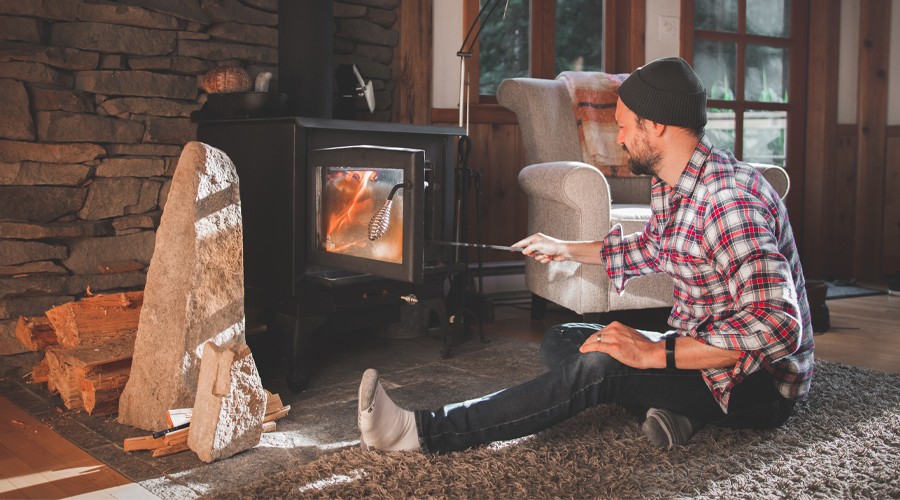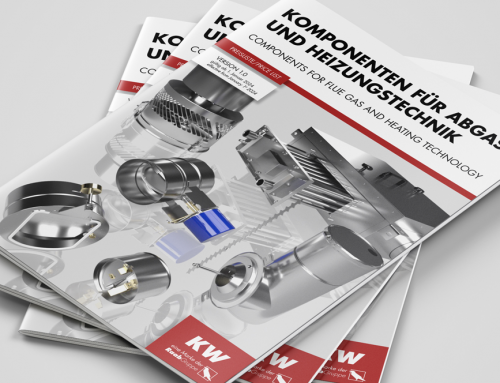Heating with biomass: What homeowners should note
Energy prices are rising to dizzying heights. Homeowners have to dig deeper and deeper into their pockets for a warm home, and at the same time there is a threat of bottlenecks in the gas supply. Biofuels offer an alternative to increasingly scarce fossil fuels. Whether wood pellets, logs or wood chips: the renewable raw materials not only burn CO2 neutrally, but also remain stable in terms of price and availability. However, there are some things to consider when switching to biomass as a fuel. Alexander Root, proxy of the Raab Group, answers the most important questions that consumers are concerned about.
Mr Root, more and more homeowners are thinking about switching to heat pumps due to the skyrocketing prices of fossil fuels. How do you rate this alternative?
Heat pumps are a very good alternative, especially in new buildings. They can be easily planned in and the building can be equipped accordingly. However, heat pumps are usually not the best choice for existing buildings. Here, homeowners must first check: Is retrofitting even possible – or economical? Among other things, the building insulation, the type of existing heating, i.e. panel heating or normal radiators, the existing pipe cross-sections, the flow temperature in the heating circuit and much more must be checked. From this, the effort, i.e. also the costs, for a conversion can be determined. These are mostly very high. This is why biomass heating is normally the much better alternative for existing buildings.
Why is it easier to convert to biomass?
The changeover from oil to biomass heating is above all comparatively uncomplicated: In most cases, only the heating system and the oil tanks need to be dismantled. The freed-up space can then be used directly for the pellet store and the heating system itself. Everything else can continue to be used seamlessly, for example the pipework and the existing radiators. This saves a lot of working time and planning effort. On average, the conversion costs to biomass are lower by a factor of 2.5 compared to heat pumps. Furthermore, there are significantly more qualified specialist companies that can install biomass heating systems than is the case with heat pumps. As a result, homeowners do not have to wait as long for the right tradesman.
What advantages do these offer over fossil fuels?
There are three aspects that are advantageous for consumers when heating with biomass. Firstly, biomass fuels offer a very high security of supply. According to current figures, a good five percent of Germany’s total energy consumption is accounted for by wood from German forests. Most of the biomass comes from residual wood that is produced during logging and sawing for construction timber. Secondly, biomass fuels are generally more cheap than fossil fuels. In April 2022, a kilowatt hour of power from wood cost an average of 7.54 ct. For gas one had to pay 12.43 ct and for heating oil even 13.02 ct. For gas and oil, prices are more likely to rise even further. And thirdly, biomass heating systems are environmentally friendly thanks to their CO2-neutral combustion.
You say that biomass heating is environmentally friendly. At the same time, one hears again and again that biomass heating systems are CO2-neutral but emit a lot of fine dust into the environment. How does this fit together?
Emissions from fine dust when burning biomass such as wood and pellets are without question a problem, especially with old boilers – provided they are released unfiltered into the ambient air. However, new boilers are inherently very efficient and the clean burn-off produces comparatively few particulate emissions. With the help of chimney components, such as particle separators, the fine dust values can be reduced even further. Components such as secondary air devices and flue gas fans are also worth considering. These components can also be easily retrofitted in existing buildings. We like to call the combination of several solutions for fine dust reduction in the chimney the “intelligent chimney”. This massively reduces air pollution – for heating without a guilty conscience.
How does that work exactly?
Two steps are crucial for low-emission biomass combustion: the combustion must be clean and the flue gas must be purified. In modern boilers, the combustion is already very good. Draught regulators and chimney fans ensure that the fuel burns even more cleanly thanks to optimum chimney draught. In the chimney itself, fine dust separators further reduce emissions. The fine dust particles are electrostatically charged and combine to form coarser particles that are no longer respirable. These are deposited in the chimney shaft and can be easily removed. This noticeably reduces the fine dust pollution for the ambient air. Furthermore, a clean burn consumes less fuel. This not only protects the environment, but also the wallet.
What advice would you give to homeowners who want to convert to biomass?
Of course, you have to get comprehensive advice. Heating installers and chimney sweeps have the necessary knowledge and can optimally assess the situation on site. This is not just about new installations or retrofitting: existing heating systems should also be checked. It is often possible to reduce emission levels and optimise combustion by retrofitting chimney components. By the way, those who want to convert can get support from the state: the Federal Office of Economics and Export Control (Bundesamt für Wirtschaft und Ausfuhrkontrolle, BAFA) promotes the replacement of heating systems in existing buildings with the “Bundesförderung für effiziente Gebäude (BEG)”. There are a few thousand euros in it for homeowners.



